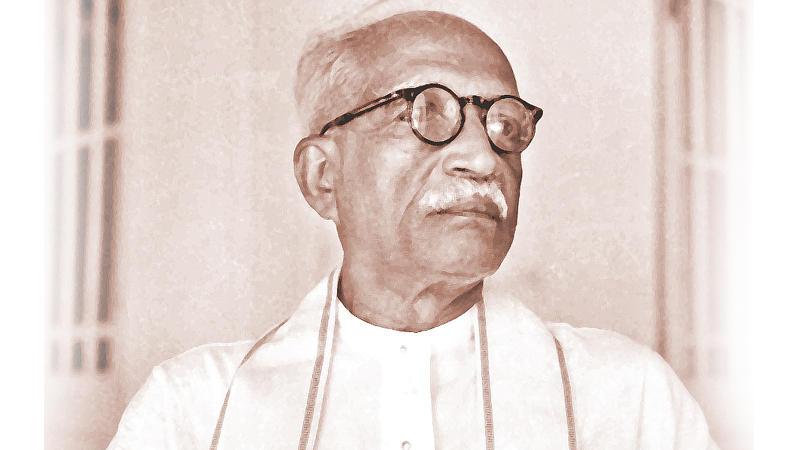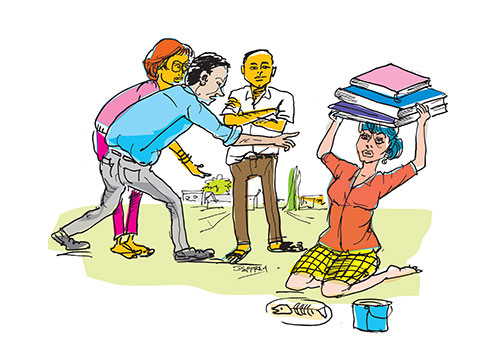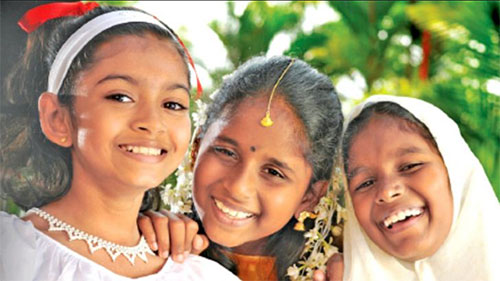by Erandika de Silva
Having been raised and schooled in Kandy, I have watched the festivities of the Esala Perahera at least 10 times, as a child, and drawn it at least five times during my school years. August was the best month for schools in Kandy Lake Round. We used to get a long school vacation as schools closed to house the forces providing security to the Esala Perahera. Ice cream carts, cotton candy vendors, popcorn, isso-wadai, balloon animals, sadda-nalaa [whistles for the lack of an English equivalent], glowsticks; August was carnivalesque for my childhood self. Growing up, I saw it more as a circus. Why do crowds raise their arms with “saadu saadu”? Why are elephants in this procession? Why do new mothers take their children under the belly of elephants for good luck? Do elephants have healing powers? Are they divine? Why are they chained then? Are they beastly?
Reflecting on my school education, I regret the time I wasted making 10- to 20-page school projects about the Sinhala New Year and Esala Perahera with no critical thinking or inquiry. I remember the model “avurudu gama” (New Year village) in school with a male head of family; it reinforced heteronormativity and traditional gender roles. Making lanterns for Vesak and Poson and omitting to make a Nativity scene for Christmas is telling indeed. Even the projects we made about the Esala Perahera were about the lineup of troupes in the procession. Does school education ever provide room for students to critically discuss casteism and feudalism entrenched in the history of the Esala Perahera? Do we have the room to critically discuss the politics of domestication and procession-training of elephants? Do school projects help us critically inquire the histories of religious and cultural practices? These uncritical school projects and activities are conduits for instilling a sense of nationalism in students. In Sri Lanka, pedagogy in school leaves no room to think of knowledge as a lesson or as a form of resistance.
The German school system takes active efforts to train school children in reading, recognizing and taking a stand against anti-Semitism. They recognize the importance of knowing the history of the holocaust, its origins, manifestations and consequences of anti-Semitism to combat it. With such careful consideration, Germany still reports cases of anti-Semitism in schools today. A question arises about what actions Sri Lanka has taken to address its history of ethnic conflict, civil war and the violent past it entails. Questions have been raised about when Sri Lanka’s school system will have curriculum revisions incorporating the country’s post-independence history and the civil war. The school curriculum fails to address questions about nationalism and ethnic relations.
What prompts me to write this piece today is seeing my cousins, nieces and nephews doing the same uncritical homework projects I did 20 years ago. It is time that educators approach these topics with sensitivity and a critical mind to broaden students’ understanding of family, gender, environment, culture and religion. How we address the topics of religious and cultural festivals in school needs to be rethought and re-evaluated. Most religious and cultural practices and festivals are passed down as a glorious past that need preservation. Although removing or banning some religious and cultural practices spark controversy, the least educators could do is address these topics critically. With the Esala Perahera just around the corner, I am reminded of a strange image and rhetoric that swept across social media in 2022; an image of Naedungamuwe Raja and his mahout. My little devil of a nephew was trying to sell me stickers of this image to buy himself a cricket bat. I had a chat about the image with my nephew in simple words a child would understand. He agreed to sell one of his paintings to me instead of the stickers.
In 2022, the passing of Naedungamuwe Raja sparked a set of complex affects among the public. Social media users affectionately named him “Naedun,” leading to children and adults worshipping and venerating him. Naedun, who was once a mere service animal, was exalted to the status of a revered sacred object because of his “sacred” role in carrying the casket containing the tooth relic of the Buddha. Focus soon shifted from the dead tusker to his mahout. One internet post said, “[Uncle Kalu was] Raja’s best friend – [Raja was] uncle Kalu’s most trusted friend; How would uncle Kalu bear the demise of Raja? Let’s not forsake uncle Kalu”. Social media users’ reaction to Naedun’s death reinforced the centrality of the human in this elephant-human interaction. The elephant-mahout relationship was romanticized and commodified with people producing artwork depicting the duo and the State issuing commemorative envelopes and stamps. This romantic depiction of Naedun and kalu maama effaces the power dynamics inherent in elephant domestication and procession training. Even the elegies for Naedun were anthropocentric. His death was mourned not for the loss of a life but for the loss of a service animal who performed a “sacred” duty.
Naedun transcended the nonhuman category through his proximity to human traits through domestication. Yet, he was not human. He occupied a liminal space in between. At the same time, with domestication and procession training, he was exalted and objectified as a service animal performing a “sacred” role. Through this, he transcended the realms of nonhuman and human, and attained a spiritual status. As people deified him, he was more than or beyond human. Although this transcendental state blurs the human-nonhuman categories, the domestication process through which it is made possible reinforces hierarchies and speciesism. Domestication attempts to reduce the distance between humans and wild elephants while simultaneously reproducing the human-nonhuman power politics by subjugating the nonhuman animal. It entails degradation and violence on elephants based on speciesism and hierarchization. Yet, in the Esala Perahera, spectators ascribe a venerated position to Naedungamuwe Raja and deify him. This is paradoxical as this tusker elephant undergoes inhumane and degrading treatment to be exalted and venerated.
Another internet post portrayed Naedun and his mahout as two best friends on a spiritual journey fulfilling perfections to attain enlightenment. The question is not whether the elephant has the capacity for religious affect or not but the assumption that the elephant wants to attain a Buddhist religious goal, should be one. This assumption is anthropocentric and re-centers the human in this elephant-mahout interaction thereby reinforcing human supremacy. In Religious Affects: Animality, Evolution, and Power, Donovan E. Schaefer explores the concept of religious affect by examining instances where non-human animals exhibit behaviours that could be interpreted as having religious or spiritual significance. One such example he discusses is a chimpanzee waterfall dance. Animal religions or religious affects are beyond human comprehension. Our assumption that nonhuman animals do have the same human religious aspirations is anthropocentric.
This kind of conversations do not happen in school because the curriculum in Sri Lanka does not have space for critical pedagogy and cultural critique. It seems that education policy planners and curriculum developers intentionally avoid controversy by not addressing these concerns. Even in higher education, the focus on educational reforms are job market demands and employability statistics and many writers in the Kuppi series have discussed the outcome-based educational reforms and Quality Assurance frameworks extensively. One problem I observe with education in Sri Lanka is that it is considered a tool that we should have but not many would view it as a tool for resistance. Mahendran Thiruvarangan’s Kuppi article in January 2024 discusses dissent as education and Harshana Rambukwella in March 2023 writes about cultures of conformity. These scholars point out the dangers of conformity and uncritical educational pedagogy. Sumathy Sivamohan in her Kuppi article in January 2024 discusses the history of Sri Lanka’s plantation industry built on the labour of a disenfranchised community as an entry point to a transformative pedagogy. In resonance, I would like to end this piece with a call to turn from reformist pedagogy to revolutionary pedagogy that trains individuals to use knowledge as a lesson of resistance.



